Meet the Women Fostering North Texas’ Explosive Growth
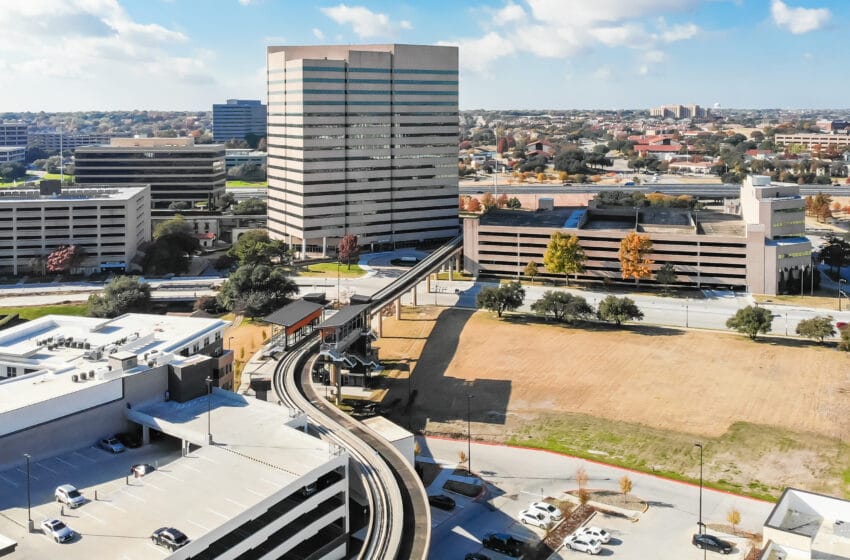
These days, every week seems to bring news of a prominent company or CEO packing up and moving to Texas.
Chief among corporate-growth hotspots is North Texas, anchored by the booming Dallas-Fort Worth metroplex. DFW has won an impressive string of Fortune 500 relocations in recent years, including CBRE Group, Jacobs, McKesson Corp., Core-Mark International, and Charles Schwab.
Most of those companies hail from California, a state that can’t seem to stop hemorrhaging headquarters. Currently, Texas is winning about half the companies that leave the Golden State, with most ending up in DFW or Austin.
This influx of new employers to DFW has undoubtedly helped its COVID-19 rebound. Today, North Texas’ unemployment rate is essentially back to its lows of March 2020, despite the summer’s delta variant spike.
Clearly, North Texas is doing something right.
Currently, Texas is winning about half the companies that leave the Golden State, with most ending up in DFW or Austin.
But that economic flourishing isn’t happening on its own. Behind the scenes, working day in and day out, is a group tasked with growing wealth and opportunities in North Texas: the region’s economic development professionals.
It turns out that North Texas is home to some of the top economic development teams in the country. Several of their programs are recognized nationally and even internationally. And—unique in a traditionally male-dominated industry—many of the top economic development leaders in the region are women.
We recently spoke to four of these teams for an on-the-ground look at the region’s incredible growth.
Never a Boring Day
The first thing the women of North Texas economic development will tell you is that they love the excitement and variation of their jobs.
As economic developers, they function as liaisons between a complex group of stakeholders, including the corporations they hope to attract to or retain in their communities, public officials, the commercial real estate community, and citizens.
We’re all dealing with pent-up demand. We’re back to drinking from the firehose.
The intense job of economic development is even more so right now, with a surge of new projects jump-started by the pandemic. “In my experience, this always happens after a recession,” says Misty Mayo, president and CEO of the Development Corporation of Abilene. “We’re all dealing with pent-up demand. We’re back to drinking from the firehose.”
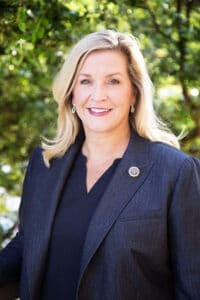
Their organizations may be in overdrive, though the women all told us that they’re glad to never be bored. Every project is a new challenge with fresh problems to troubleshoot. “I can’t imagine having been an accountant,” says Sally Bane, Plano’s director of Economic Development. “As reliable and solid as that is, I don’t think I could handle the repetition.”
“You often have to pinch yourself,” says Beth Bowman, president and CEO of the Greater Irving-Las Colinas Chamber of Commerce and the Irving Economic Development Partnership, “having the pleasure to be in the room with chief executive officers that are running our global economy. It’s really exciting. Our work is bringing jobs home to our local community so individuals can put food on the table, or have disposable income to support the local economy. It’s a real honor to be part of that.”
“First and Foremost, We’re in It for Texas”
In addition to thriving on the speed and community impact of their roles, economic developers tend to be a competitive lot: They fight fiercely to win projects, grow and diversify the tax base, and build up their communities for the long term.
But the women we spoke to are all very clear that they see their North Texas counterparts as collaborators first, rivals second.
“First and foremost, we’re in it for Texas,” says Bowman, noting that her group actively works with the governor’s office and the Texas Economic Development Corporation. “We go up against our friends in the region often, so we have a mutual respect for each other. Obviously, our goal is to turn a prospect into a project and a project into a win, but when we go up against somewhere like Plano, we tell the team honestly, ‘You can’t make a bad choice.’ We have an authentic respect for each other.”
Over in Plano, Bane agrees: “We all work very hard, collectively, to get people to pay attention to Texas as an option. And then we all work harder to get them to focus on North Texas. But when it comes down to subsequent consideration within North Texas, that’s when we get competitive. Not personally, just professionally.”
Lexie Woodward, Manager of Economic Development in Mesquite, just east of Dallas, agrees: “We don’t view it as, Oh, Plano won that over us, but instead that Plano was the best fit for that business. If it’s a win for the general area, it’s a win for all of us.”
It helps that much of the time, communities aren’t fully aware of who they’re competing with for a project, notes Kim Buttram, Director of Economic Development for Mesquite. “Companies keep that very confidential. We just try to be our best selves. And at the end of the day, the company makes the decision that works for them.”
Much of an economic developer’s work, especially in the early stages of a project, does take place under NDAs put in place by the corporate partner. Even outside those agreements, they generally don’t speak much about projects before they are officially announced. Misty Mayo of Abilene notes that this is probably her team’s number-one challenge, something of an occupational hazard. “How do we promote what we’re doing without compromising the project? The community needs to hear about it, because they’re the ones who decide how our efforts are funded. People tend to say, Oh, they’re so secretive. But that’s not the case; we’re professional. Sharing details is just a matter of when, and when the time comes, we’re shouting the news from the rooftops.”
No Longer the Only Women in the Room
And what about the fact that there are so many women economic developers in the area?
When we asked Beth Bowman, she bristled good-naturedly: “Why does the story have to be about women? Can’t it just be people who are successful in the field of economic development?”
That’s truly the primary criteria of this article, but the fact remains that women are making big strides in a field usually full of men.
“I’m often the only female in the room,” says Bowman. “Some would say, ‘Oh my gosh, is that intimidating? Is it lonely?’ I look at it as putting the most appropriate talent into that meeting to accomplish our goals. I encourage women in the industry to rise to the challenge. As women, we may be more prepared, we may be willing to listen a little bit more. Either way, we need more perspectives: women, men, people of different cultures, and sexual orientation. We need all those minds around the table in Irving-Las Colinas.”
Kim Buttram of Mesquite has also found herself in many rooms of men, but it doesn’t bother her. “My mentors have been older men for the most part,” she says, laughing.
She’s also seen the profile of the economic developer change in ways that have opened the door for more women. “In the 1980s and ’90s, a lot of economic developers were from the utility industry. But over the last couple of decades, the soft skills side of the profession has become more pronounced. Infrastructure isn’t the only thing now; it’s workforce. A good economic developer has to have soft skills to foster collaboration. Quite honestly, women may have an edge there.”
Like her peers, Sally Bane of Plano doesn’t spend much time pondering the male-female breakdown of her profession. “I don’t really think a lot about gender differences,” Bane says. “In fact, I think that’s the most progressive thing you can do, to think about people’s value as individuals first.”
In the 1980s and ’90s, a lot of economic developers were from the utility industry. But over the last couple of decades, the soft skills side of the profession has become more pronounced. Infrastructure isn’t the only thing now; it’s workforce.
Irving–Las Colinas: Headquarters of Headquarters
The epicenter of Dallas and Fort Worth, Irving-Las Colinas is yet another burgeoning sector of the metroplex.
Economic development efforts here are led by the Irving-Las Colinas Chamber of Commerce. Beth Bowman, the chamber’s president and CEO, happens to be a longtime mentee of Sally Bane in Plano (and an honoree on Texas CEO Magazine’s 2020 Exceptional Leaders list).
When Bowman graduated from Baylor University, her goal was to be a sports agent. “I may have been in the wrong place at the wrong time,” she says with a small laugh. “Instead of representing athletes, now I get to represent a community and interact with different companies and entrepreneurs who are running our global economy.”

Since starting with the chamber 17 years ago, Bowman and her team have worked alongside an impressive roster or companies, including Fortune 1000s like Exxon-Mobil, Kimberly Clark, McKesson, Fluor, Louis Vuitton, Neighborly, Pioneer Natural Resources, Michaels, and Darling Ingredients.
The chamber has worked hard to cement Irving-Las Colinas’ brand as the “Headquarters of Headquarters”—in other words, the place top companies want to be based. “We give companies a local address with global access,” says Bowman, who has a special gift for such turns of phrase.
One of the prime draws of Irving and Las Colinas is the access to a diverse and highly educated workforce. The median age in the area is 32, and 52 languages are spoken in its schools.
Another huge selling point is what the Greater Irving-Las Colinas Chamber team calls the “10-minute life.” Bowman attributes the term to Avocados From Mexico CEO Alvaro Luque (read our interview with him here), who leads his organization from Irving. Luque and others in the community appreciate the ability to access everything they need—home, office, school, kids’ activities, pet care, entertainment, Dallas/Fort Worth Airport—in just a few minutes.
Bowman’s colleague, Diana Velazquez, the chamber’s VP of Economic Development, points out that every resident of Irving-Las Colinas can enjoy the 10-minute life. A former banker who, like Bowman, stumbled into economic development without realizing it offered a real career path, Velazquez says, “It takes me four minutes to get to work, six on a bad day.” The thriving restaurant scene includes local culinary offerings from across the globe. “If you go along Belt Line Road, you can eat just about anything you want, from Mexican to Mongolian,” adds Velazquez.
A third of DFW International Airport is technically within Irving, and the airport is connected to the heart of the community by six stops along the Dallas Area Rapid Transit (DART) train line. “That’s very alluring to CEOs who travel a lot,” says Bowman. She also points out that it’s just eight minutes to the corporate aviation options offered at Love Field.
Velazquez notes that Irving-Las Colinas, like so many communities, touts itself as “business-friendly,” but they make the term more tangible than most. “A lot of communities can say they’re business-friendly. Not a lot of communities can say that they have a six-day turnaround on permits for remodels and new construction. Time is money for our clients.”
A lot of communities can say they’re business-friendly. Not a lot of communities can say that they have a six-day turnaround on permits for remodels and new construction
“There’s not another community that has been able to touch our speed to market,” adds Bowman.
This sensitivity to the needs of partners is characteristic of the Greater Irving-Las Colinas Chamber. The team sees itself in the service business. They acknowledge that the process of selecting a new site is usually a vulnerable time for all the employees of a business—and their families. “We pull up the red tape and roll out the red carpet,” says Bowman. “We do anything we can to minimize the disruption they’re experiencing. We immediately connect CEOs with their peers here in Irving-Las Colinas so they can become part of the community. And not only the executives, but their partners and spouses and family members who are relocating with them.”
The chamber is also proud of its status as a “five-star chamber.” That honor was earned from the US Chamber of Commerce, which audits the operations, penetration, brand, governance, and more of local chambers and offers basic accreditation all the way up to its top honor: five stars.
Irving-Las Colinas was one of the first accredited chambers back in the 1970s, and it was later the first to earn five-star status. That puts it among the top 1 percent of 7,000 chambers across the US. Far from Texas, the chamber’s reputation precedes it, to the point that site selectors and consultants often come to them first with projects.
“People at the national level hear about Irving-Las Colinas and they’ll say, ‘Oh yeah, that’s that five-star chamber,” says Bowman. “We’ve really built unshakeable trust with our partners. People know they’re going to get the best service possible.”
The Irving-Las Colinas team, like the others we spoke to, offers high-level service not because they want to attract any company. Rather, they are intent on building long-term partnerships that enrich the lives of residents. That includes retaining the companies that are already there.
Bowman points to CHRISTUS Health as a good example. “When we met [CHRISTUS Health president and CEO] Ernie Sadau and his associates 12 years ago, we knew they would need additional space at some point. Sure enough, 10 years later, they came to us and said they were going to market to look for their future global headquarters.
“We wanted them to stay at home in Irving,” says Bowman. “The deal had twists and turns, but at the end of the day, CHRISTUS realized they wanted to plant their roots here because of the quality-of-life amenities for their associates and the trust and continuity with local community stakeholders. It was really exciting to keep them home in Irving-Las Colinas.”
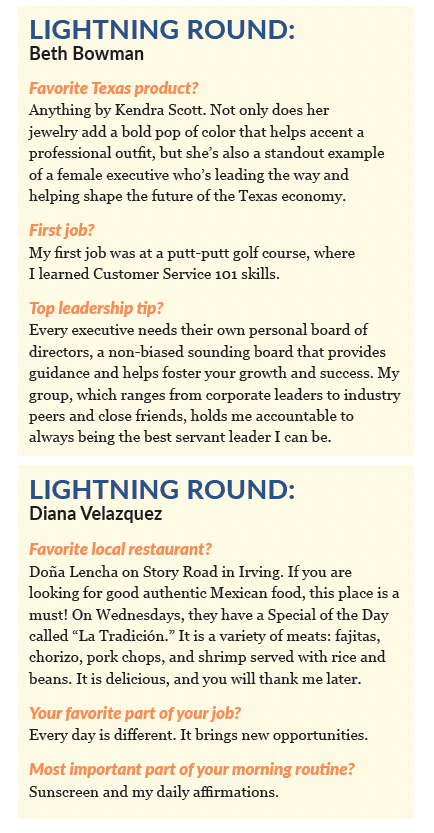
Mesquite: Bringing an Industrial Revolution to the Rodeo Capital of Texas
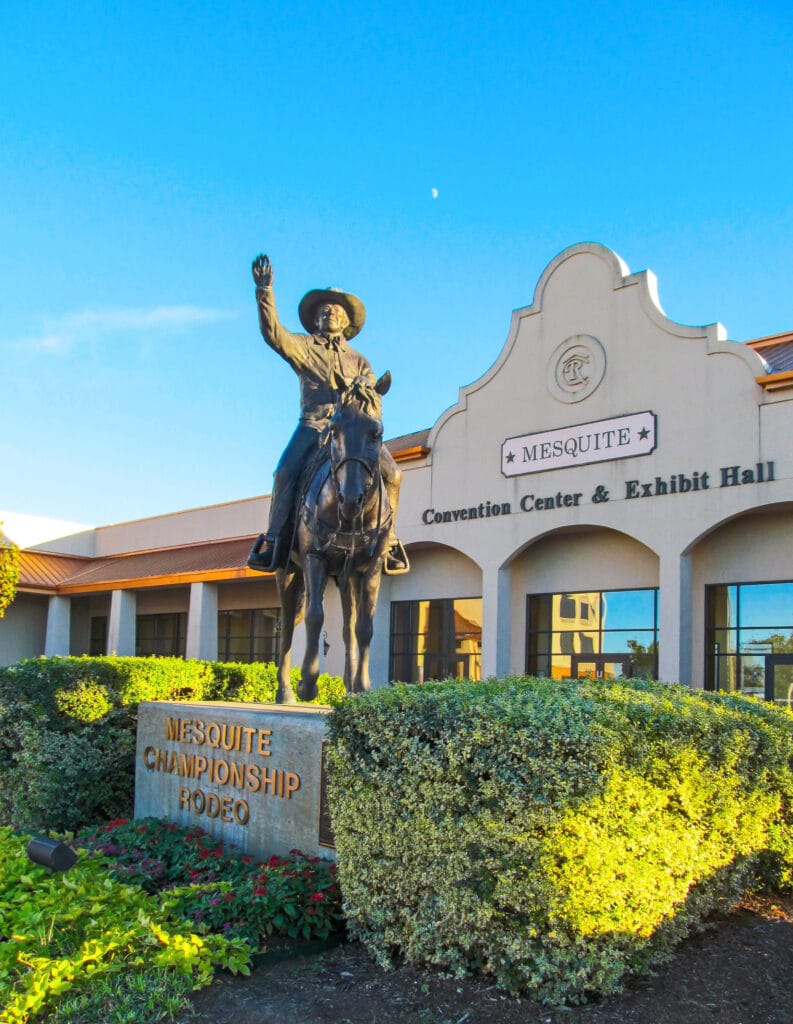
Kim Buttram’s favorite two words to describe Mesquite are accessible and frontier.
As the city’s Director of Economic Development, accessible is Buttram’s preferred term to affordable. While many cities’ cost of living has skyrocketed, land and housing in Mesquite are still modestly priced, especially considering all the amenities Mesquite offers. Known as the Rodeo Capital of Texas, Mesquite is proud of its work-hard, play-hard image. And with over 10,000 new homes and 16 million square feet of industrial space in the pipeline, investors are taking note.
Buttram’s team has overseen significant reinvestment in the city’s original town center, Downtown Mesquite, which is being reinvented as a place for public art, new restaurants, and local entrepreneurs. “We love big business, but we also want Mesquite to be known as a place where you can bring your business to life,” states Buttram. “Our new farmers market is becoming an incubator for brick and mortar ideas.”
Accessible also refers to Mesquite’s status as a transportation hub. It is situated at the intersection of four major freeways—I-30, I-635, I-20, and US 80—giving employers easy access to the entire metroplex workforce. This advantage explains the longevity of some of Mesquite’s major employers such as Orora Visual and Fritz Industries, each boasting over fifty years and multiple expansions in the city. Mesquite is the site of an executive airport, too, Mesquite Metro Airport, with over 150 hangars, and more than 250 landings and takeoffs per day. Nearby is one of the nation’s busiest Union Pacific intermodals, facilitating the shipping of large freight containers. It’s a reminder of Mesquite’s past as a railroad town.
Buttram’s other word, frontier, alludes to the abundance of virgin land available for development in the Trinity Pointe Mesquite area.
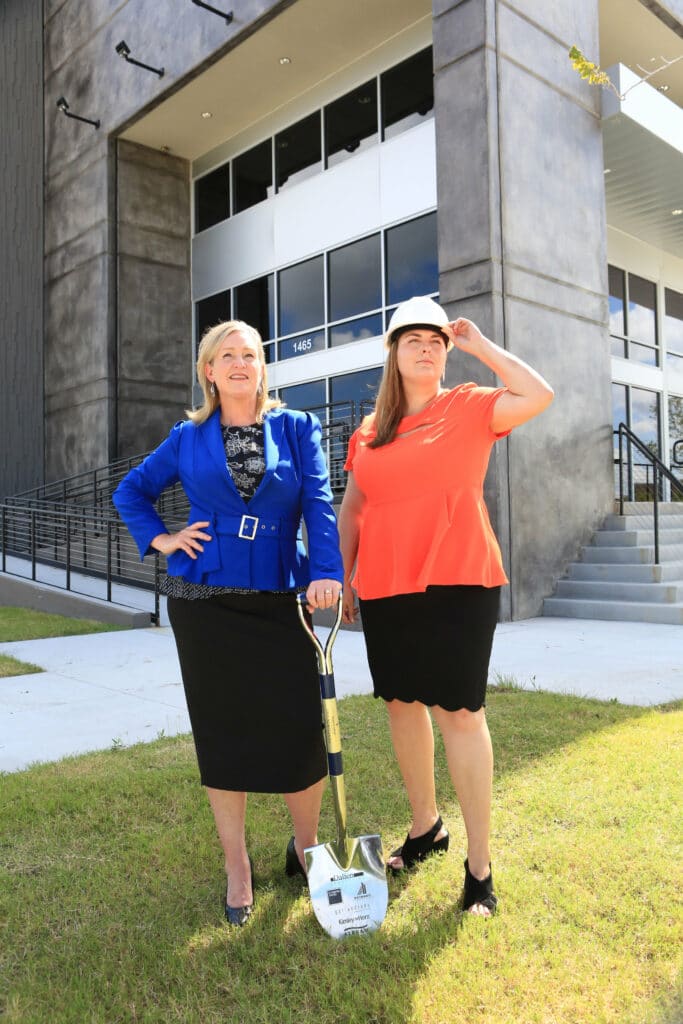
“Thanks to the tenacity of our city leaders, there’s a lot happening along I-20 in Dallas County and into adjacent Kaufman County,” says Buttram. “We have six million square feet of industrial development going up there, with surrounding prime retail sites, as well as thousands of homes in master-planned communities.”
This overall spate of new commercial development began with Urban District 30, a nearly million-square-foot industrial park built by Dallas-based Urban Logistics Realty. That project broke ground in early 2020 and is expected to generate over 500 jobs.
“It’s helped up our game,” says Buttram. “The Class A development has attracted a manufacturing expansion and a well-known Internet retailer thus far.”
Buttram, who was appointed director earlier this year, leads a busy six-person staff. They’re currently running fast—attracting investment, shepherding projects, working with partners to develop the local workforce, managing the convention and visitors bureau, and more. In addition to US companies making inquiries, they also see interest from foreign companies, especially from Asia.
One of Buttram’s key employees is Economic Development Manager Lexie Woodward, who joined the Mesquite team in January. She previously served in the Peace Corps in Nicaragua, in AmeriCorps, and in economic development roles in Illinois, Arizona, and Texas.
Buttram and Woodward’s strengths are uniquely suited to each other. Buttram, who worked her way up to director from an administrative assistant role at the Forney Economic Development Corporation, is a straight-shooting, high-energy visionary. By her own admission, she enjoys taking risks and pushing envelopes. That makes the more measured Woodward her perfect foil; she takes a more pragmatic approach and often takes the lead on frame-working projects and creating the checklists. “There are so many moving parts and a long list of steps, from dirt to ribbons, and Lexie keeps us on track,“ Buttram said admiringly.
Buttram and Woodward note that the structure of their organization is a little different from others in the area. Specifically, theirs is not a typical 4A/4B economic development corporation that allocates local sales tax for economic development projects; our 4B is a quality of life corporation which primarily supports the city’s 80-plus parks. “So, we have to be very creative with incentives,” says Buttram.
Still, Mesquite offers plenty of advantages that help it land projects without sales-tax funding. One of those is a distinctive appeal for companies that want to unify corporate and manufacturing headquarters in one place.
Buttram points to a global furniture company, Elements International, as an example: “They put their warehouse distribution and their headquarters together here in Mesquite. You’ve got this headquarter-level design, open space, lots of glass, cool names for all the meeting rooms. Then behind that, in the same building, they’ve got their warehouse distribution.
“The fact that they can put all that under one roof and access a diverse workforce of corporate and warehouse talent—that’s one reason Mesquite is so attractive.”

Plano: An International Draw
About 20 miles northwest of Mesquite is Plano, a city that serves as home base to a who’s who of major US companies, from Frito-Lay to FedEx Office, Cinemark Theaters to Toyota Motor North America.
Plano’s Director of Economic Development is Sally Bane, now on her 25th year in the city. Bane started her career at an electric utility in Houston. “That job gave me a foundational understanding of how critical infrastructure is in the building of a community,” she says.
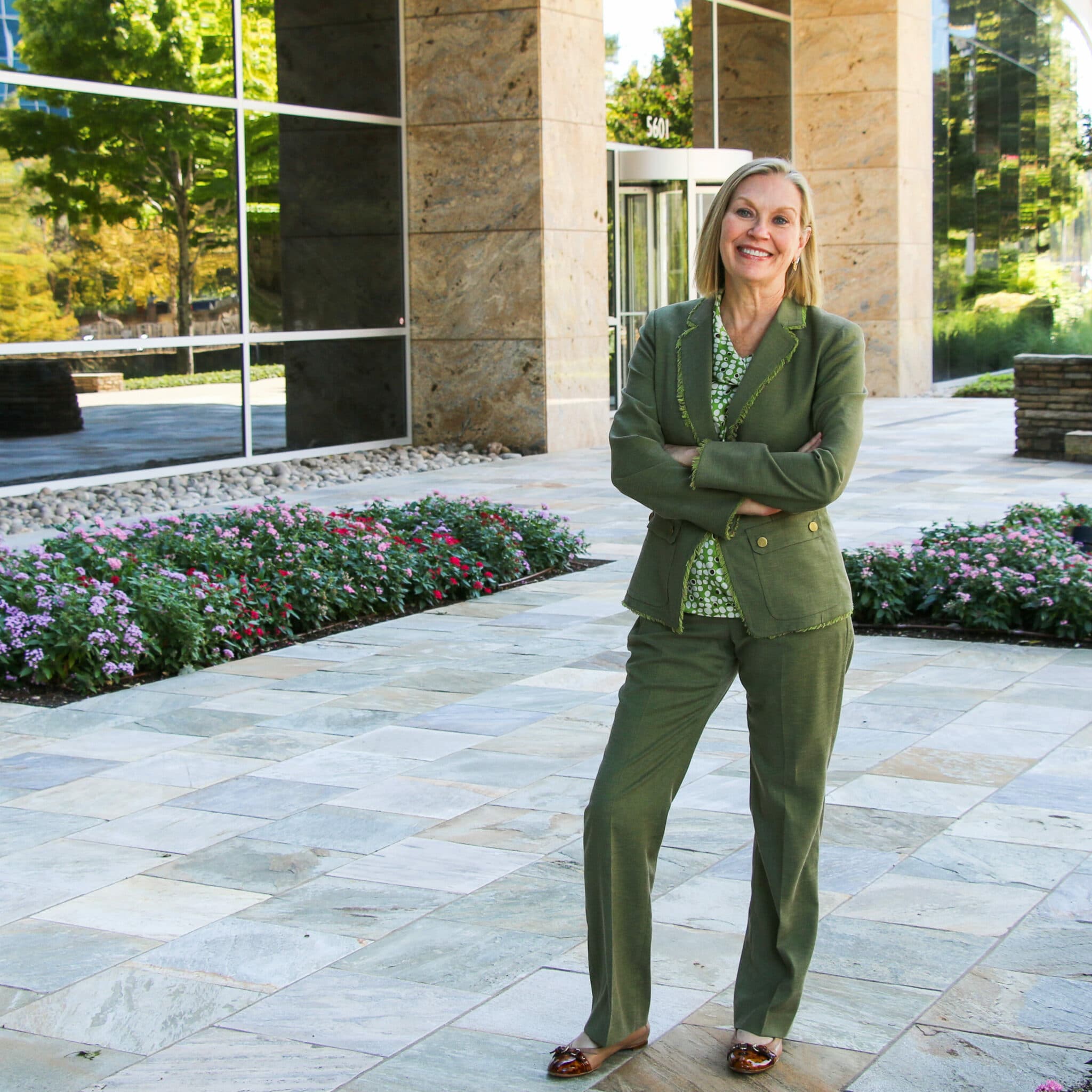
From there, she went to do economic development for McKinney, and then it was on to the Dallas Regional Chamber for nine and a half years. “I came to understand the strengths of each of those communities, which today helps me position Plano as a contender for projects,” says Bane. “We’ve developed a program that has produced some pretty amazing results for this community. Though we’re a package deal. The people behind the scenes contribute as much as I do to landing these projects.”
Our relationships in other countries are beginning to reawaken. We’re working with a lot of small and midsize businesses throughout Asia.
Asked what makes Plano a draw for businesses, Bane points immediately to the people. Location used to be the principal criteria for corporate site selection, she says, but that’s changed as the war for talent rages. Plano’s highly educated workforce gives it a clear edge, thanks largely to its excellent school district.
“We have a business-friendly environment here, too,” says Bane. “That’s an overused term, but it’s nonetheless true for Plano. Our city council is very interested working with business leaders.” She also points to the Plano’s tax rate, which is lower than most communities in the metroplex.
In the week we spoke with Bane, international interactions had been picking up. Some of these were pre-COVID deals that had cooled off but are now hot again. “Our relationships in other countries are beginning to reawaken,” she says. “We’re working with a lot of small and midsize businesses throughout Asia.”
With 23 corporate relocations and expansions in 2020 alone, Plano is a huge economic development success story. But Bane keeps a keen eye on potential challenges. One of those is a waning number of greenfield sites.
“We’re down to 1,600 or 1,700 acres of truly undeveloped commercial property,” she notes. “That’s still a lot, but we have to be mindful to attract projects that give us the most value for what we have left.”
Accordingly, some of Plano’s biggest opportunities are site redevelopments, or infill. Bane points to the 271 acres previously owned by JCPenney, which was redeveloped into the business and cultural district known as Legacy West. In addition to a staggering array of shopping and dining options, Legacy West houses Toyota’s North American headquarters, as well as regional headquarters for Liberty Mutual and JPMorgan Chase.
“That’s an example of how to redevelop land already in use,” says Bane. “Our next big redevelopment is going to be the former EDS campus,” she notes, referring to the 98-acre campus originally built for Ross Perot’s Electronic Data Systems in the late 1980s. “That’s a lot of land, and a huge opportunity to re-envision and reinvent what that campus could be.”
Whatever the case, Bane is clear that her team doesn’t seek out any old project for Plano. They’re picky about finding corporate partners who are an authentic match for the city. It’s a long-term relationship, more like a marriage than a quick fling.
“We’re not on Tinder,” laughs Bane, before adding: “Don’t use that.”

Abilene: Small City, Big Projects
Abilene, a city of 125,000 people a couple hours’ drive from the heart of DFW, is a bit of an outlier in North Texas. But it’s drawing a steady stream of its own corporate relocation and expansion projects.
Misty Mayo, CEO of the Development Corporation of Abilene (DCOA), sees even more potential down the road. Two years ago, she was recruited to the DCOA from the Boerne Kendall County Economic Development Corporation, but before BKCEDC, she served as the San Antonio Executive Vice President at the Economic Development Foundation for nearly a decade.
After calling San Antonio home for so many years, she initially told the recruiter she wasn’t interested, thinking she’d retire at BKCEDC. The more she thought about the endless potential of a place like Abilene, though, the more she was enticed.
“Helping to build the future of Abilene is really what fuels my passion now. My kids are in elementary school and junior high, and when I meet their friends, I think about how I’m helping create jobs so that they’ll have a choice to call Abilene home one day.”
Asked what makes Abilene special, Mayo points to many of the same factors that make the DFW metroplex appealing. There’s the convenient location, including quick trips to Dallas-Fort Worth and manageable flights anywhere in the country. There’s also the workforce, which benefits from three universities, a technical college, and a community college. Dyess Air Force Base, the city’s largest employer, is another asset to the community.
But Abilene has a special charm all its own. It’s a change of pace from bustling DFW—feeling a bit more like a big small town.
This was a winning formula for Great Lakes Cheese Company (GLC), the world’s largest cheese-packaging company, which became the biggest economic development project in Abilene’s history. The DCOA announced in May that GLC would break ground on a 280,000-square-foot manufacturing and distribution facility, expected to employ about 500 people in the Abilene area.
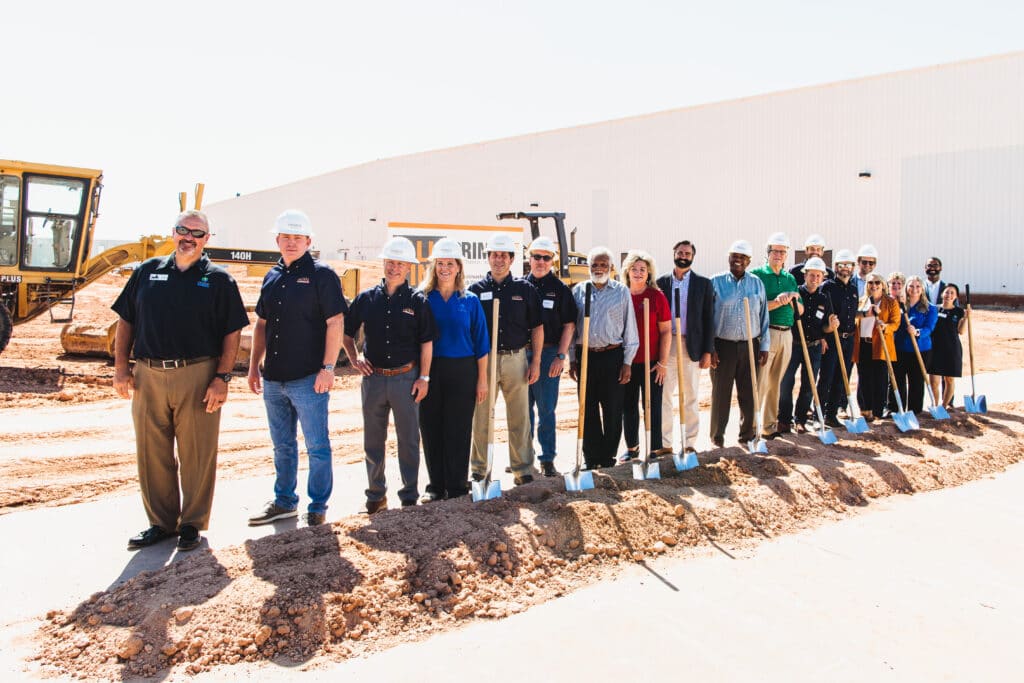
“In 10 years, that’s a $1.3 billion impact on our community, both direct and indirect,” says Mayo. “That’s incredible.”
And the projects keep coming.
On the heels of the Great Lakes Cheese Company news, Primal Pet Group, maker of freeze-dried pet treats, announced a $31 million expansion in Abilene. Most recently, the city secured a last-mile operation with Amazon.com. “These three developments represent what’s to come in Abilene. We’re continuing to successfully recruit and retain businesses across the country and beyond,” says Mayo. “Our elected leaders and the community are able to reap the benefits of years of planning. We’re building real pride of place here.”
The speed of the DCOA’s projects has also picked up. Years ago, the deals Mayo worked on took a minimum of 32 months. Now a project might take as few as 10 to 14 months. “We have to be a lot more agile in this profession than we were 10 years ago,” says Mayo. In fact, since she started in Abilene two years ago, Mayo has expanded business commitments to over $300 million in capital investment for the community.
Mayo attributes the increased speed partially to the fact that companies, site selectors, and developers can now research Abilene entirely online. Gone are the days of weeklong visits and tours—now it’s Google Maps and the DCOA’s website. “Sometimes it’s like going on WebMD and thinking you’re a doctor,” says Mayo. “So we do our best to make sure our website is useful and accurate. A one-stop shop for the information they need about Abilene.”
Mayo ends our conversation by crediting Texas for its 4A/4B programs, which she believes have made Texas more competitive as a corporate home. In 1989, Texas first authorized 4A taxation, which allotted a small percentage of local sales taxes as a funding source for economic development corporations like the DCOA. (Abilene was the first city in Texas to opt for the program; currently, a half cent of every sales tax dollar goes toward economic development activity.)
4A funding is limited to creating or retaining primary jobs, particularly industrial and manufacturing roles. In 1991, 4B taxation was added, allowing economic development corporations to use their funding for broader community development projects.
“Our budget is about $13 million a year,” says Mayo. “That enables us to work directly with companies and ensure we’re investing that money back into the community. Our job is to multiply $1 into many. I feel a special commitment to make sure the community reaps the benefits of that decision they made many years ago.”
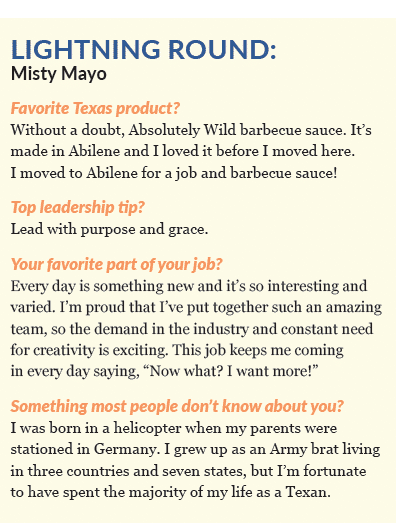
What About Financial Incentives?
One of the most sensitive topics in economic development is that of offering companies financial incentives as they move into a community.
These incentives can take the form of tax abatements, grants, fee waivers, and a whole host of other perks, depending on what’s offered by the specific economic development body.
Across the board, the economic development leaders we spoke to told us that incentives are often misunderstood by the public—and that they aren’t as big a factor in most deals as people might think.
Kim Buttram of Mesquite points out that incentives are rarely the primary factor in site selection. Far higher on corporate priority lists are items like location, access to talent, and quality of life. “Incentives matter most when the client gets down to similar options and one is offering more incentives than the other,” says Buttram. “That can change their decision if all the other factors are close.”
“There’s a lot of misperceptions around how incentives are used,” says Beth Bowman in Irving-Las Colinas. “Incentives never make a bad deal good. They just allow a great deal to be greater.” She points to the fact that in Irving-Las Colinas there are minimum qualifications that all companies must meet and adhere to throughout the term of their agreements to receive financial incentives.
There’s a lot of misconceptions around how incentives are used. Incentives never make a bad deal good.
Sally Bane says that Plano has passed 144 incentive agreements since 2006, so they’re definitely not averse to the concept. But an overemphasis on incentives is often a signal that a company might not be the best community partner.
“The conversation about incentives is an important one, but it shouldn’t be the most important thing,” says Bane. “If that’s the highest priority for the company, they’re an unlikely fit for this community. Incentives by their nature are temporary. And that implies that a company’s occupancy in our community might be temporary as well. We’re looking for well-rounded corporate citizens who understand their impact on the community and want to be a part of the fabric of Plano.”
Ultimately, all four North Texas groups take a similar approach to incentives: They see them as useful tools, but they remain focused on the bigger picture. As stewards of the community’s resources, they are intent on
turning any incentives into a tangible return for citizens.
Economic Developers’ Advice for CEOs
What does all this mean for you, the CEO?
If you’re looking to expand your company’s presence or relocate to another part of Texas, here is some advice directly from these top economic developers.
1. Reach Out for Assistance Early and Often
“Start communicating with us at the onset of your project,” says Lexie Woodward of Mesquite. “Don’t wait until there’s an issue, such as having trouble getting a permit. We can have all sorts of informal conversations to help you achieve what you’re trying to achieve.”
“Use us as a resource for the project,” echoes Beth Bowman of Irving-Las Colinas. “We can help you avoid mistakes we’ve seen in previous deals.”
Misty Mayo says, “I want to tell CEOs that economic developers are your greatest advocates. Our whole job is to help shepherd your deal—to get the timing right, to express the impacts effectively to elected officials. Your open and frequent communication helps us help you.”
There may also be programs and resources available to you that you’re not aware of; engaging with chambers and economic development corporations directly is a great way to learn about them.
2. Don’t Wait for the “Perfect Time” to Relocate
Bowman encourages CEOs to stop kicking the can down the road on relocation decisions. She paraphrases what Brian Tyler, CEO of McKesson, said after the company moved its global headquarters to Irving-Las Colinas: “McKesson should’ve made this decision years ago.”
“Many companies are waiting for the perfect time to make an announcement,” says Bowman. “They don’t want to interrupt work flow. There’s not a perfect time. But there is always the right time. And that time is now.”
3. Understand Your Goals for an Expansion or Relocation
In communicating with economic development teams, CEOs should be able to articulate what they are seeking from a move.
What type of talent do you need? What’s your vision for the next 10 years of the company? And what types of alignment exist between your company culture and the communities you’re considering?
4. And Most Important: Get Engaged in the Community
All the women we spoke with encouraged corporate leaders to get involved with the communities they operate in. “If you engage where you’re physically located, the community is always going to be there for you,” says Bowman.
Sally Bane of Plano emphasizes that “engagement” can mean things like philanthropic giving. But there are many ways to engage beyond that. She likes to tell the story of her team’s work Toyota.
After Toyota relocated its North American headquarters to Plano, the company gave back by sharing its unique production system—a forerunner of lean manufacturing—with the community.
“Toyota applied their production system to assist the North Texas Food Bank in solving some of the pantry’s operational challenges,” says Bane. “It helped streamline their whole process with the goal of getting food in the hands of people experiencing food insecurity more efficiently and quicker. They worked with Children’s Health, too, on patient safety and quality of care.
“That’s the kind of involvement that builds the fabric of a community—when a company takes what they’re really renowned for and shares it in open architecture with other people.
“How perfect is that?”






